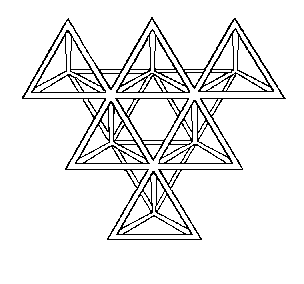
Return to Mark/Space
ISBN ?
novel, science fiction, evolution, philosophy, transgenic species, intelligence, identity
"Sirius is a tale of immense and tragic pathos in which Olaf Stapledon evokes the terrible loneliness of a dog born with the mind of a man. Thomas Trelone's life-work was to explore the possibilities of producing a superman by experimenting with hormone injections into various mammals. Sirius himself is infinitely the most successful of these trials. He is the only viable puppy born with the brain capacity of a human being, but he still has the senses, the instincts, and the physique of a dog. Born at the same time as Plaxy, Thomas's youngest daughter, the child and puppy are brought up together, share the same lessons, and develop an intense understanding of one another's humanness and dogness.
"It is the inevitable conflict between Sirius's intellect and instincts and its effects upon the girl, Plaxy, which has produced one of the most moving of the 'Wonder Stories' we call Science Fiction." [jacket blurb, UK pbk, 1964]
"In the case of Sirius, Trelone uses hormones to increase both the size and density of the animal's brain in utero. Stapledon describes the process, along with many false starts and disastrous early efforts, convincingly and in great detail...
"Sirius's sapience takes Trelone, who was merely trying to create a superior sheep dog, somewhat by surprise. When he realizes the degree of his success, the biologist moves his family to North Wales and raises the animal as a human child. The super dog shares the nursery with Trelone's infant daughter, Plaxy. The pair discover the world together, becoming friends despite their physical and sensory differences." --Stefan Jones (in SF Eye , Issue #15, Fall 1997).
"Sirius is the most human of all Stapledon's novels, perhaps because its central figure is a dog. Sirius is a sheep dog that has the brain and consequently the perceptions of a man, although in other respects it remains dog. The product of a scientific experiment, the dog gradually wins its independence. The scientist who develops Sirius's intelligence exclaims, 'I feel as God ought to have felt towards Adam when Adam went wrong -- morally responsible'. By this and references to Milton's poem, the theme of Sirius is linked to Frankenstein [Mary Shelley --ed.], as another critic [Patrick A.McCarthy --ed.] has observed.
"Unlike Frankenstein's monster, the great dog is allowed a mate. Its life is made tolerable by a reciprocated love for the girl Plaxy. Love is a rare thing in Stapledon's world; here, reaching across species, it finds the warmest and most touching expression, to live on even when the mutated dog is killed.
"The ordinary clamour of human affairs, the rattle of coffee spoons, the marrying and begetting, lie beyond Stapledon's compass: yet this harried canine life, with its struggle for self-realization on lonely hillsides, does grow to represent as Fiedler declares, 'the condition of all creatures, including ourselves'." --Brian W.Aldiss (in Trillion Year Spree , 1986).
"Probably the earliest speculation on a transgenic species (although genetic engineering was not the method employed). Stapledon's philosophic musings about purpose and identity are probably more relevant now than ever." --<Henry W.Targowski (in Mark/Space , 14 June 1997)
Classic. Recommended.

Return to Mark/Space